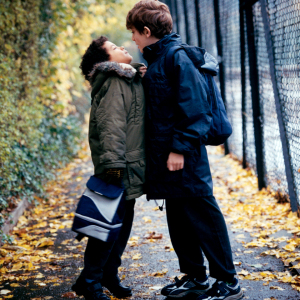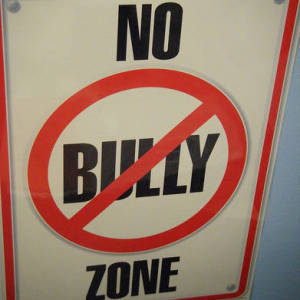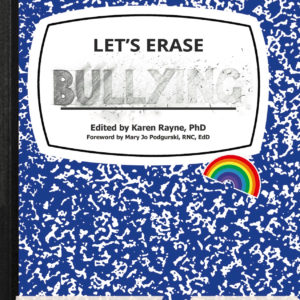 On Monday I wrote about romantic and sexual relationships and the potential intersection with bullying. Today I want to think a little bit about stereotypes and how they lend themselves to an atmosphere that is accepting of bullying.
On Monday I wrote about romantic and sexual relationships and the potential intersection with bullying. Today I want to think a little bit about stereotypes and how they lend themselves to an atmosphere that is accepting of bullying.
Bullying can and is, of course, based on a wide range of “reasons” that include everything from an assumption that adherence to socially stereotyped roles and norms is required to name-calling and physical intimidation that seem to have nothing to do with norms. But falling outside of socially assumed norms remains an important part of a bullying experience. Whether it is personal expression, gender stereotypes, sexual orientation, or physical ability, whether it is financial resources, religion, educational background, or artistic ability, most bullying is based in what one person thinks other people “should” be. When someone is different, they are more likely to be bullied.
And so to what degree, I wonder, does a lesson like this one from Changes, Changes, Changes have on an atmosphere of bullying?
BEYOND PINK AND BLUE
Objectives
By the end of the lesson, students will be able to:
- List common gender-role stereotypes associated with males and females.
- Discuss why assumptions or stereotypes about gender roles may be offensive or harmful.
Rationale
Implicit messages regarding gender roles are transmitted to all members of society, and in particular, adolescents. In this lesson, students are prompted to think about their assumptions regarding gender roles and stereotypes. They are encouraged to take an active role in this critical thinking process and participate in the discussion of why such stereotypes exist.
This lesson invites participants to react to and discuss statements like:
- Boys should not cry.
- All girls like playing with dolls.
- Boys cannot wear skirts or makeup.
- A girl should ask out a boy if she likes him.
- When girls get together, most prefer to gossip and shop.
- Boys are interested in going out with girls with “perfect” bodies.
Some of the statements are more challenging than others, but they are all grounded in assumptions of masculinity and femininity and how they are or should be expressed based on sex. Notably, the statements are all issues that when not adhered to in some social groups lead to bullying.
Anti-bullying lessons, as my middle school age daughter frequently moans to me, are almost exclusively about what to say or not say and how to touch or not touch someone else. Rarely do they dive into the preconceptions that are the basis behind the bully.
Sex education has been recently shown to be so much more effective when power and gender are integral parts of the lesson plans. I wonder how much more effective anti-bullying campaigns would be if they incorporated gender too?






